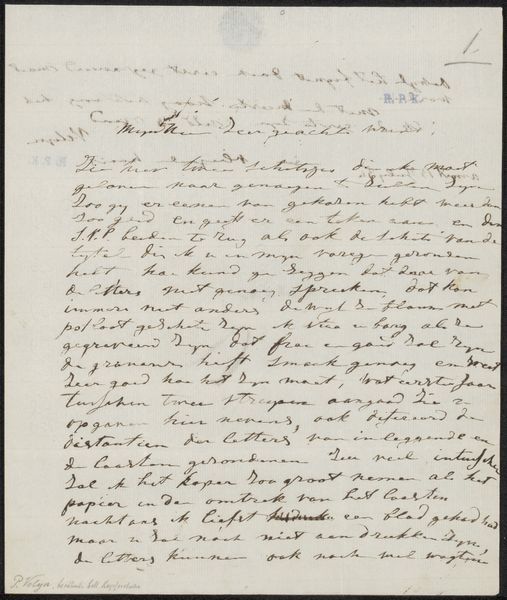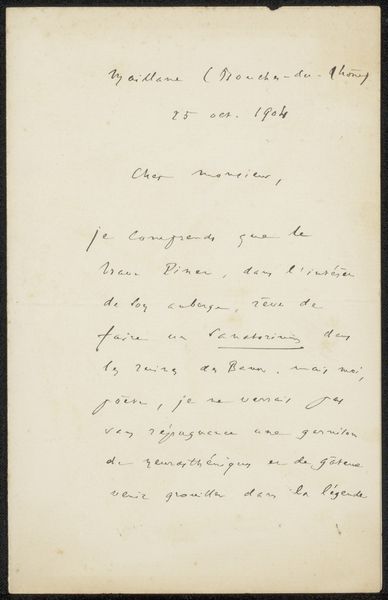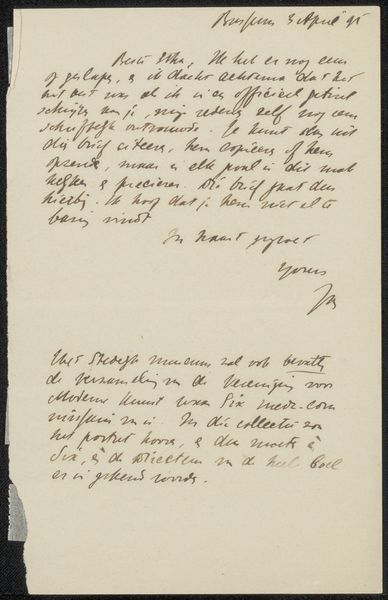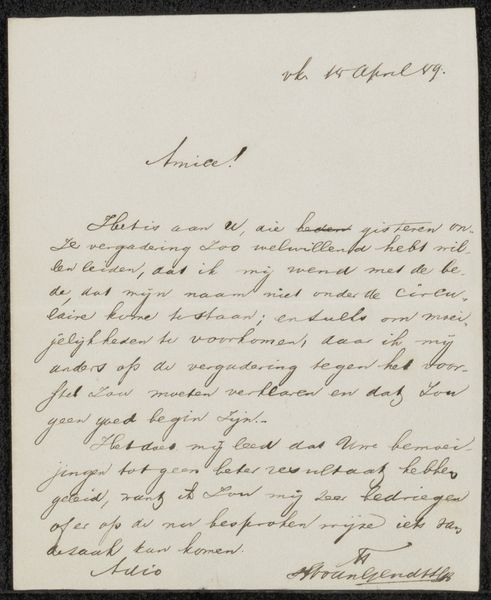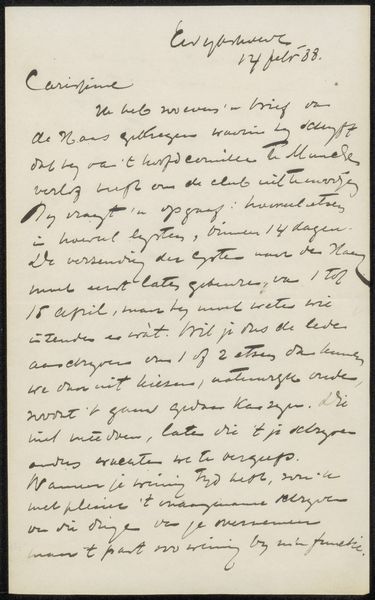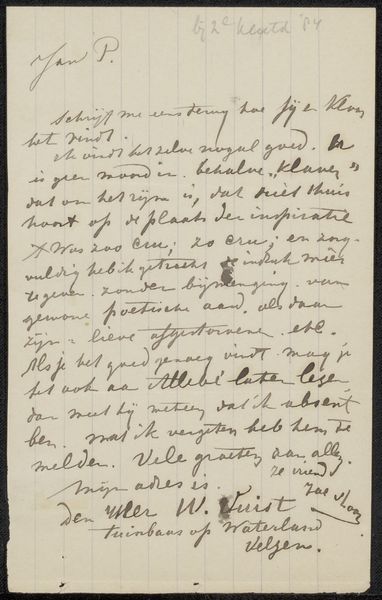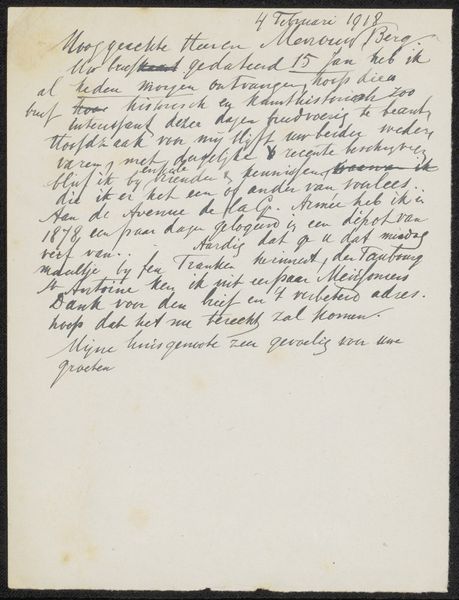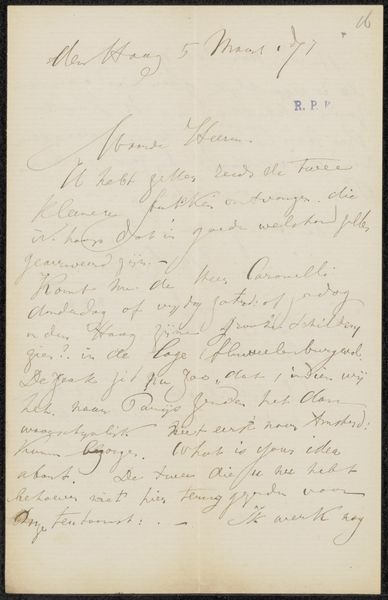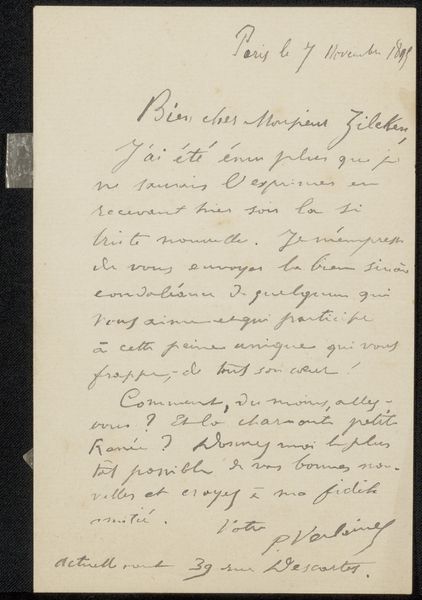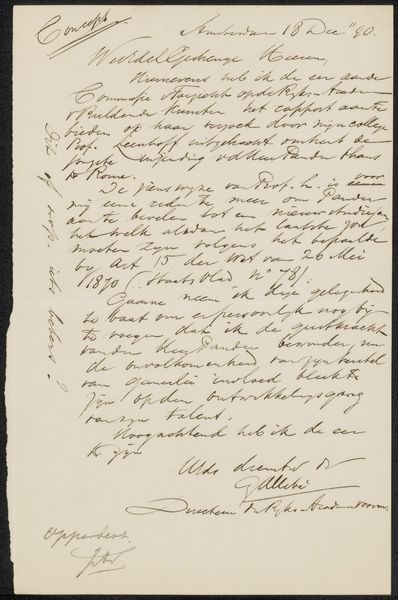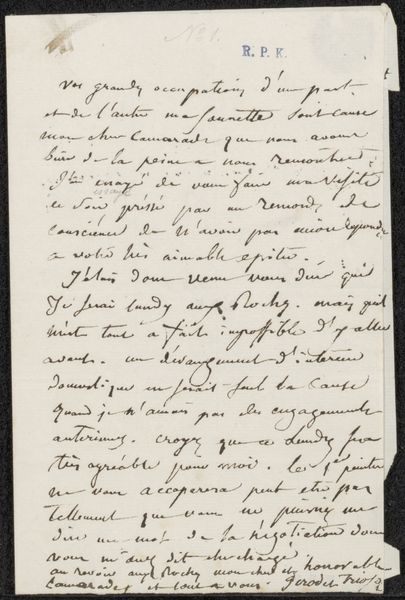
drawing, graphic-art, ink, pen
#
drawing
#
graphic-art
#
pen sketch
#
ink
#
pen-ink sketch
#
pen work
#
pen
#
calligraphy
Copyright: Rijks Museum: Open Domain
Curator: This piece, housed in the Rijksmuseum, is titled "Brief aan anoniem," or "Letter to Anonymous." It's believed to be from somewhere between 1841 and 1849 and was created by David van der Kellen. Editor: My first impression is its intimacy; the close-up text invites us to ponder the contents, to try to decipher the old handwriting as if unveiling an interpersonal and societal discourse of the time. The delicate and detailed writing draws you in to question more about this correspondence. Curator: It's a pen and ink drawing on paper, a fine example of graphic art and calligraphy from the period. Look closely, and you’ll see the ink bleeds, how the varying line thickness imparts depth and texture to this textual representation. There is certainly a raw element on display here. Editor: And what were these transactions it references, seemingly detailing the prices of bronze and silver medals? Was Van der Kellen making statements on the values placed upon civic or military honors? Perhaps we see a critique of the commercialization or commodification of achievement woven into its social context. Curator: Indeed, that is very plausible. As an engraver, van der Kellen would be acutely aware of materials and processes, of reproduction and value. It underscores your idea of how artisanal practices intertwine with the social narratives they reflect. He was concerned with communicating a sentiment, documenting an experience or emotion using tools available at his time. Editor: So the "anonymous" becomes a stand-in for a whole network of relationships surrounding these medals, the patrons, the recipients, the broader public participating through a symbolic exchange of labor and worth. This allows us to rethink not only the narrative but the artist’s very function, challenging any separation of "art" from mundane exchange. Curator: Absolutely. By examining it closely and carefully contextualizing the societal milieu that enabled the author to use such precision to transfer not only details but emotions, the act of deciphering this history allows a very real connection to times that are not only physically distanced but experienced in different dimensions. Editor: It becomes a testament to how materials, method, and historical undercurrents, when understood collectively, weave compelling intersectional readings.
Comments
No comments
Be the first to comment and join the conversation on the ultimate creative platform.

